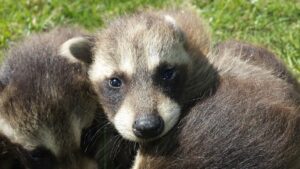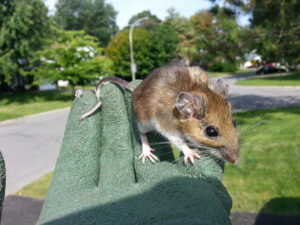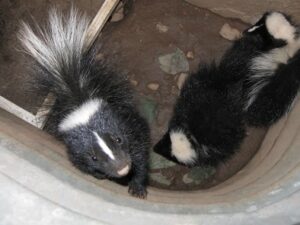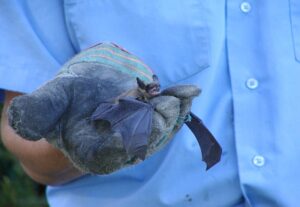With children at home and summer right around the corner, now is the perfect time to work with them on wildlife education and safety. We at Skedaddle have put together some fun ways to teach your children appreciation for wild animals, while also reinforcing respect for boundaries that will keep them, and the animals, safe.
Learn About Individual Animals
When introducing children to animal education, we recommend starting with facts about the creatures themselves. Learning interesting information about each species tends to catch children’s attention and allows them to relate to each animal. This makes them more likely to listen and understand when you talk about wildlife being afraid of people and biting or scratching in self-defense.
Raccoons
- Raccoons are omnivorous, which means that they eat plants and animals. Raccoons eat fruits, nuts, berries, bird eggs, insects, fish, and frogs. When they live close to cities, they also eat scraps of human food that is thrown in the trash.
- Their babies are called kits.
- These creatures are nocturnal, which means they are awake at night and sleep during the day.

Mice
- These small rodents are also omnivores. Mice eat grass, seeds, fruits, nuts, small insects, and animals they find that are already dead. When mice live in cities, they like to eat people’s food from the trash, and they can even get treats from cupboards because they can bite boxes and bags open with their sharp teeth.
- Their babies are called pups.
- Mouse teeth never stop growing. They find hard things to bite to file their teeth down.

Squirrels
- Squirrels are also omnivores – squirrels eat fungi, seeds, fruits, nuts, eggs, insects, and sometimes even small snakes.
- Their babies are called kits.
- Squirrels wrap their big fluffy tails around themselves like a coat to keep warm when it’s cold. They also use their tails to help them balance and to communicate with other squirrels.
Skunks
- Skunks are omnivores as well. They eat insects, mice, reptiles, birds, grass, leaves, nuts, and roots.
- Skunk babies are also called kits.
- They can hear and smell better than us, but they can’t see very well, and they are also not very good at climbing.

Bats
- These mammals are omnivores too. They mainly eat insects, but they also drink juice from fruit and nectar from flowers.
- Their babies are called pups.
- Bats are not actually blind, they can see just as well as us humans. They do use their ears for echolocation, which means that they make a loud noise, and the noise bounces off things to tell them where they are. Bats have excellent hearing.

Practice Safety Awareness
After talking about the things that make each animal special, point out to your children that animals are normally quite afraid of people. Help them understand it’s good to like animals and watch them from a distance, but part of liking them is to want them to be happy. The best way to keep animals happy is to give them space so that they won’t be afraid. This will help your children build empathy and feel empowered in making positive decisions with wildlife interactions.
Teach How To Handle Injuries
After introducing the concept that animals are afraid of people, add the education that because they are afraid, they will sometimes try to defend themselves. Talk about growling, bites, scratches, and other ways critters protect themselves. Explain that sometimes animals are sick, just like people get sick sometimes. If a sick animal bites or scratches, it can make a person get sick. Make sure your children know that if they get even a small bite or scratch, they should tell you, so doctors can give them special medicine to make sure they are okay.
Assign Them Detective Work
Finally, teach your children to watch for animal sightings. Encourage observation of holes leading to dens, tracks, and droppings in your yard so they can tell you what they see. Together, you can research which animal these signs lead to, and then watch for those animals out in the wild.
Let Skedaddle Humane Wildlife Control in Rexdale Help You
If your children come to you with reports of wildlife that needs to be removed from your property, let them see how seriously you take the lessons you teach. Contact us to let us safely, and humanely remove your furry visitors.



